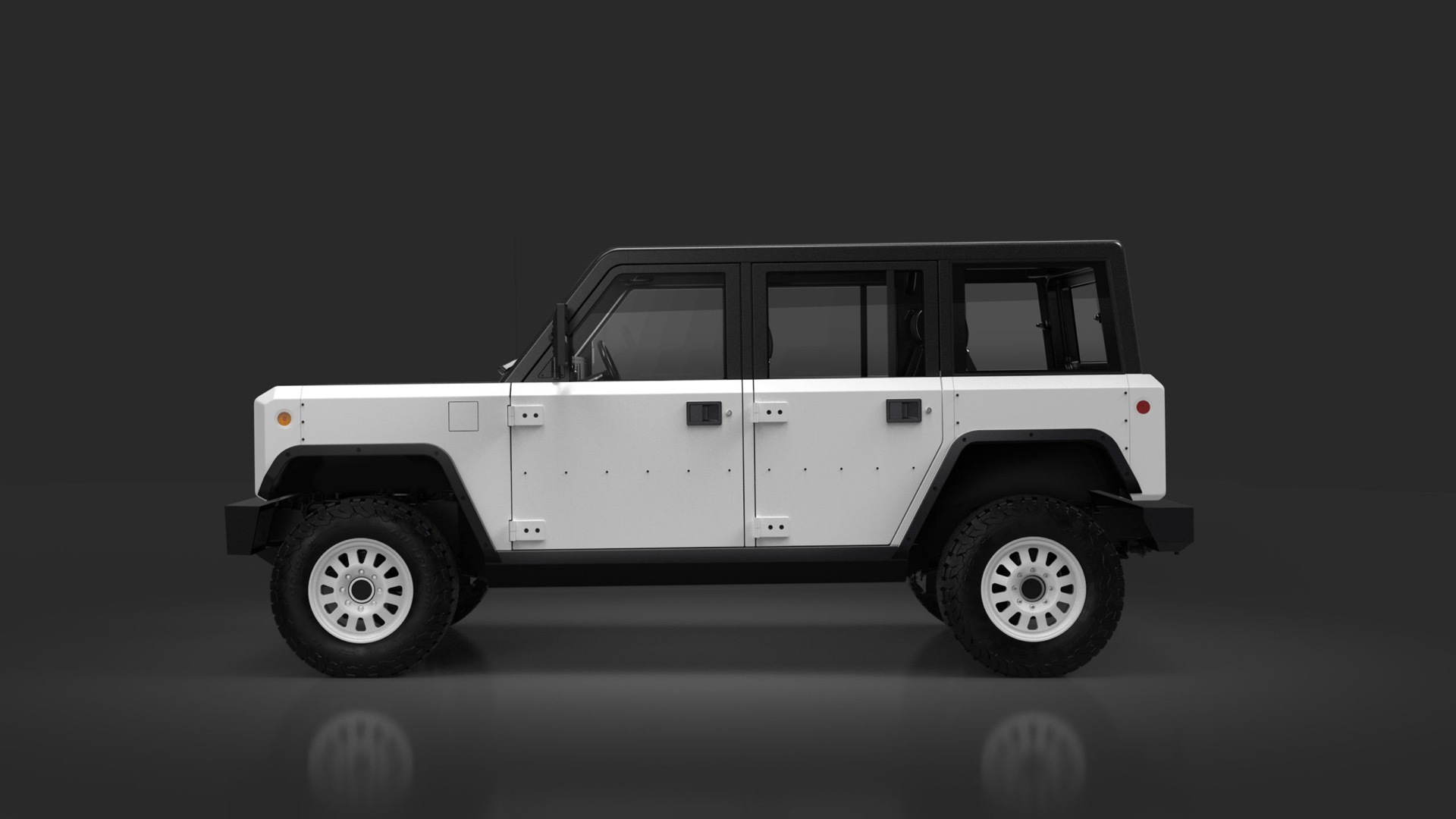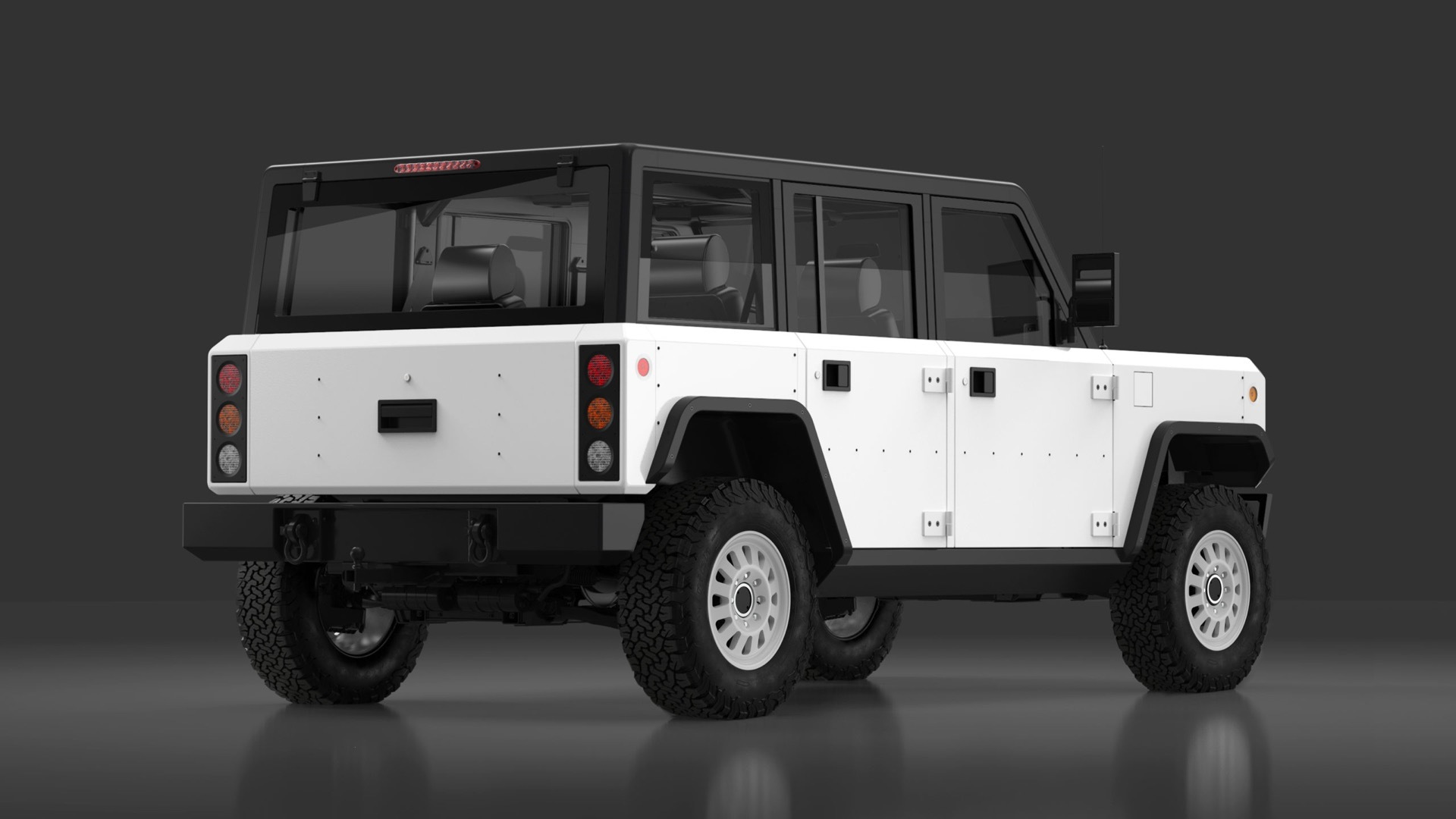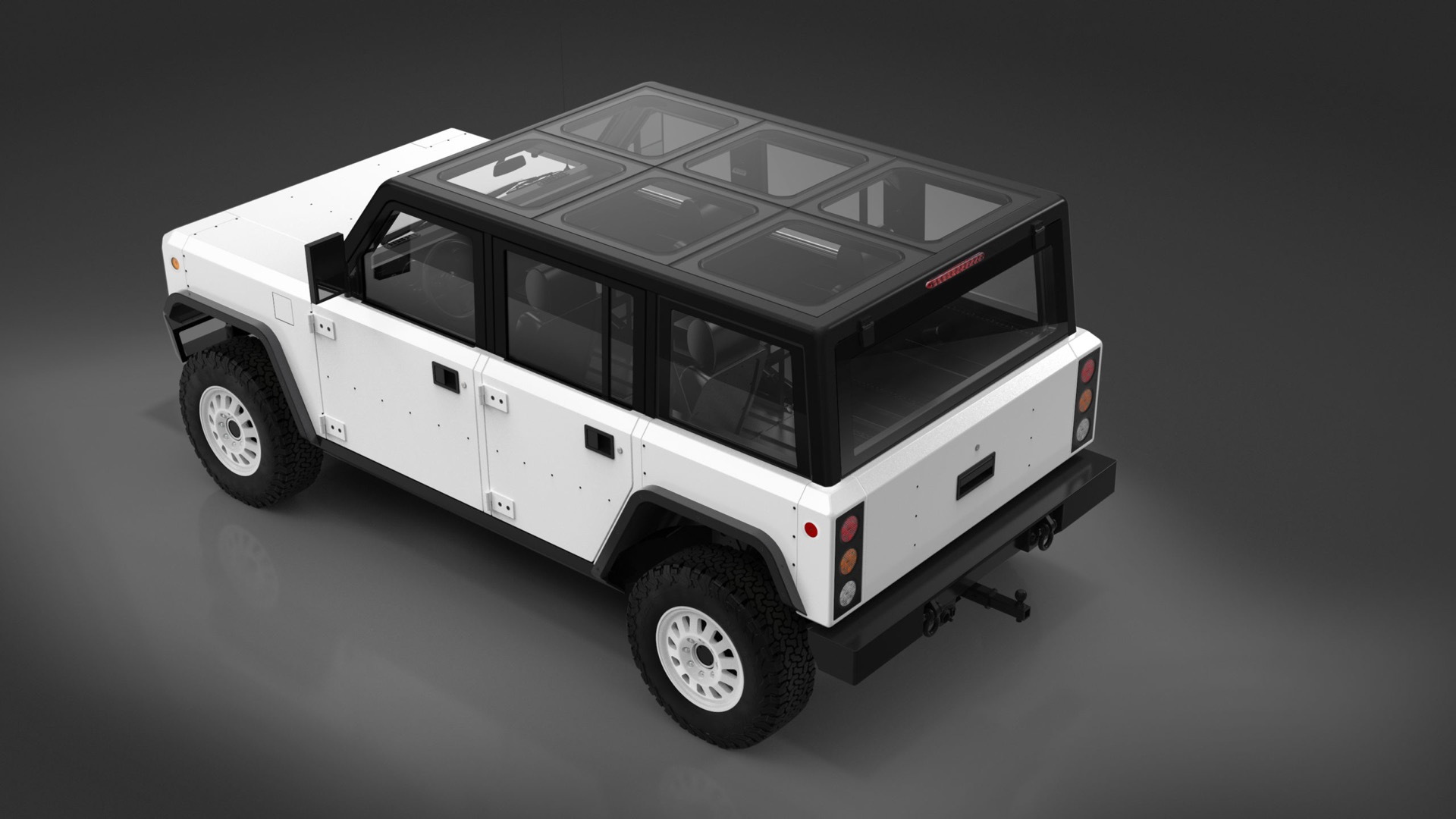Bollinger Motors has unveiled "production intent" versions of its B1 electric SUV and B2 electric pickup truck—and they look altogether different from the prototypes unveiled last year.
The company confirmed numerous design changes, including a raised belt line that left more space for packaging components under the "frunk." This in turn required making the windshield, side glass, and rear window taller to maintain the same amount of glass area.
The front ends of both vehicles are also somewhat different, with stacked headlights that match the design of the taillights. Bollinger also said improvements in thermal management allowed it to replace the previous dual top-mounted radiators with a single, smaller, unit behind the front bumper.
Bollinger also moved the B-pillar forward for better ingress and egress. This changed the shape of the window, leading Bollinger to install something most new-car buyers probably haven't seen in years: a manual window crank.

Bollinger B2 production intent
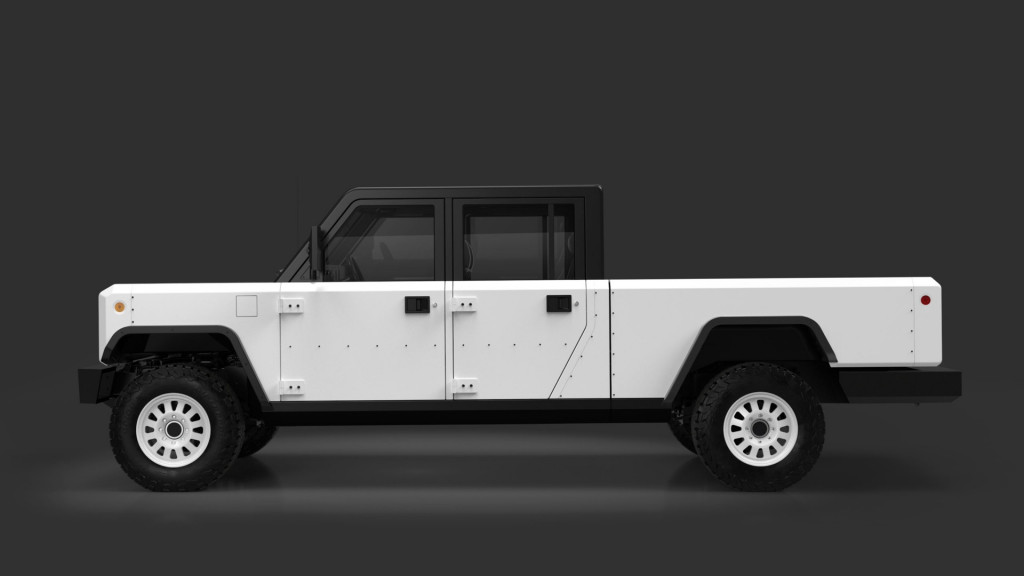
Bollinger B2 production intent

Bollinger B2 production intent
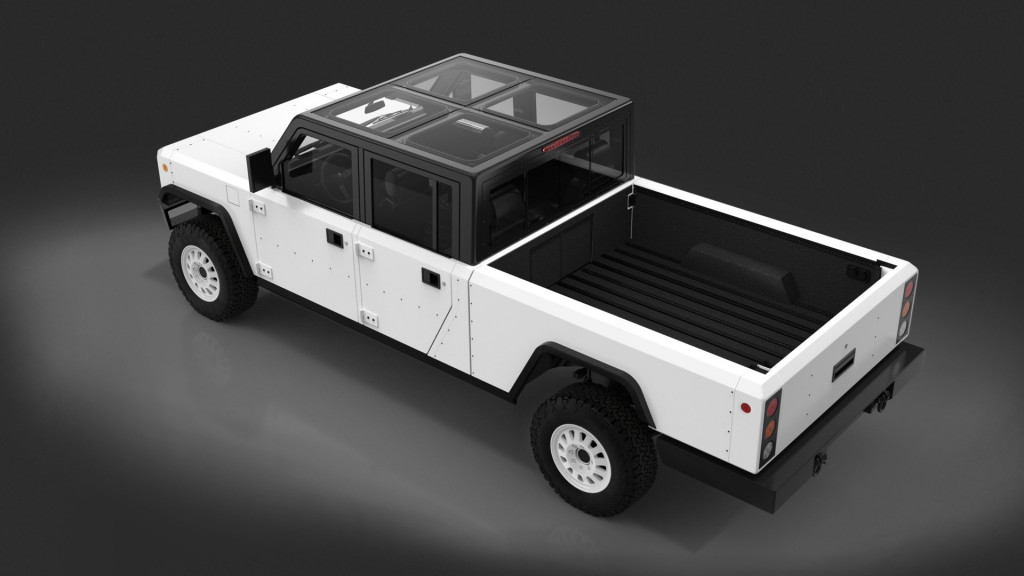
Bollinger B2 production intent
All of these changes apply to both vehicles, but the B2 pickup's bed is also now independent of the cab, allowing for commercial chassis-cab applications, something Bollinger teased earlier this year.
Bollinger called its previous round of vehicles prototypes, so perhaps some changes were to be expected. In October the company revealed a modular battery pack that appeared to be a different design than what was teased in earlier stages.
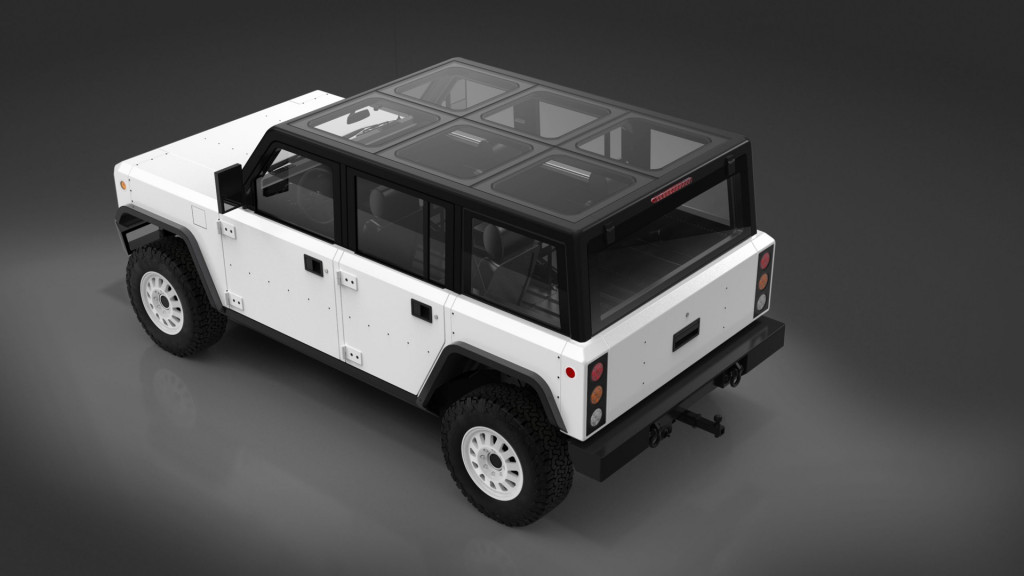
Bollinger B1 production intent
But Bollinger also emphasized that many of the features and cues of those prototypes—like reconfigurable cargo features and a pass-through—would carry over to the production models.
Specifications also appear to be the same as before. That means dual motors producing a combined 614 horsepower and 668 pound-feet of torque, and a 200-mile range.
Do you like how the design has evolved? Do discuss.

